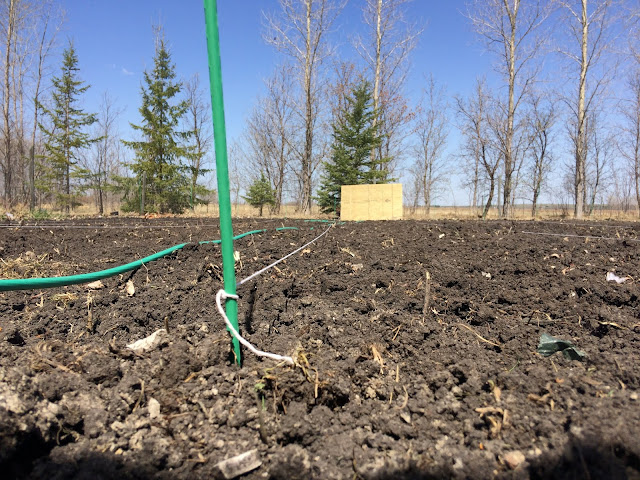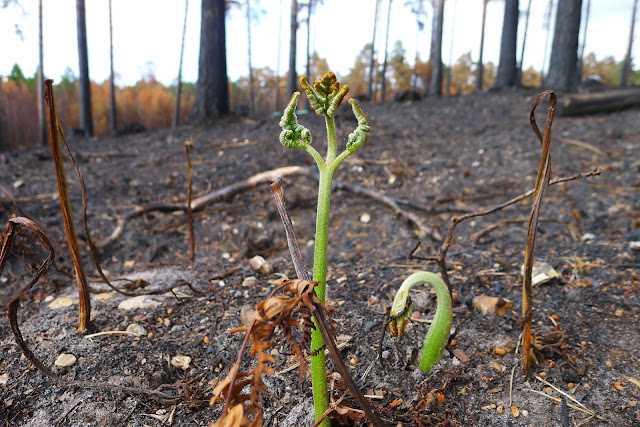So despite the lack-of-posting, plenty has been going on!
STEP 1: TILLING!
When we moved into our place, August 2016, the garden wasn't used that year. The people living here previously, had just had a baby, and didn't have the time necessary. As a result, there were 5 foot tall thistles throughout the entire garden! EEP!! My plan that year had been to use roundup and kill them all. However, Curtis decided to mow them before we could talk! ACK! So last year's gardening was the battle of the thistles. I did use round up. What I did was use sprinklers in the spring time to water the soil and encourage the thistles to come-forth from their dormancy. When they were up, I went in mercilessly with round up. Once those all died off, we tilled the garden. Then, I watered it a second time, encouraging the strong stragglers to sprout. Again, I rounded them up! after those had died off, we tilled a second time, and then It was planting time by about early-middle June last year.
So suffice to say, we are now pretty adamant about tilling the soil! We tilled it in the fall after the season was over, and again in the spring time before planting. This needed to happen before I could even plan out my garden.
STEP 2: MEASURE YOUR ROWS!
You may be thinking that drawing up your garden plan is next. but actually it's not! One method of row-gardening is a "tiller garden". This means you leave enough space between your rows, that you can use the tiller to do most of your weeding for you. Our garden is plenty large enough to use this method and still grow much more than we need to.
In my case, I made my rows 5.5 feet apart. Our push-tiller is about 30 inches wide, plus a 3 foot allowance of space for the actual plants as they grow. No one wants to accidentally till their plants down!! :(
I used my tomato stakes and some leftover crochetting yarn for these temporary row markers. Staking and measuring at both ends of the garden ensures straight rows. Not necessary if you are hand-weeding, but when using a tiller, its good to be somewhat geometric ;)
STEP 3: PLAN IT ALL OUT!
NOW we get to the fun stuff. Now that the rows are all measured out, I have a better idea of exactly how many rows I have to work with. This helps me distribute and plan out where I put things.
It's also a good idea to draw it out ahead of time, in case your plant-labels blow away. Then you still know what you planted where.
This year my garden is a bit dis-jointed, because I am trying to rotate the locations of the things I grew, from last year. In addition to crop-rotation, I'm also trying to abide slightly by a companion planting method as well. I don't stick to this too closely. but mostly I look out for plants that really DON'T get along well next to each other, so I don't sabotage my own gardening efforts.
Once I had it drawn out, I actually laminated it so I could scribble on it with dry-erase markers. This helped me to time out my planting efforts! Last year, because I had to start so late in the season, I did everything in a matter of two days. This year I spread it all out over 3 weeks, and I'm glad I did so! In the above pictures, you'll notice blue lines. These are the seeded items I was planting 1-2 weeks before our last-frost date. Lettuce, kale, spinach, kohlrabi, herb seeds, onions etc... Having a plan made it much easier to know what I was doing!
STEP 4: GET PLANTING!
After that, it's pretty much just timing and elbow grease! You may recall my previous post about plant labels. This is when they come in very handy! A pretty spark of color labeling where things are. It gives the garden a nice look even before anything is up out of the ground!
I made special labels for my grow-a-row for Winnipeg harvest. You can too! Grow a row to donate to those in need!
Tada! Seeds planted! At this point I could still just walk all over dragging the hose where I pleased. But once things start sprouting, that is not okay. So there's still more work to be done!
This is my basil starting to sprout up! I don't buy plants for basil, as it grows very well from seed, so long as you have some patience to wait for basil in july! :)
STEP 5: PLANTING SEEDLINGS!
So most seedlings, it's recommended to wait 1-2 weeks after your frost date to plant them. This year has been very unique in our hot temperatures, so you could have had them in the ground well before the frost date even! But because I kept to schedule, and it's a big garden, I did wait till respective dates passed. My only tip right now to get you going, is to use your hands and build a mote-wall around each of your seedlings to help them retain their watering, instead of having the water run off down the mound! This can be a real plant-saver especially on the scorching hot days we've been having this spring!
This year I'm doing 55 tomato plants! I'm trying several different varieties. So my hope is to do plenty of fresh eating, as well as canning (and of course, giving away! cause that's over half the fun of growing a big garden, is being generous with it!)
I did half a row of cucumbers last year, and found I wasn't as generous as I'd liked to have been because we were using them all. So this year it's a full row! :) about 7 or 8 varieties as well, all properly marked!
For peppers this year I did jalapenos, green peppers, and something called "weaver's Mennonite stuffing pepper" which I think of as the "cherry tomato" of the peppers family. Small bell peppers that you can either eat fresh or stuff and cook. It should be fun if they grow!
STEP 6: WRITE IT ALL DOWN!
This is something I harp on a lot. DOCUMENTATION FOLKS!! I went around my garden and mapped out each tomato, pepper and cucumber plant, labeling their specific varieties. Because the little plastic plant labels will wash away, sun bleach or blow away, or simply get covered by the plants themselves. This is HUGELY important if you want to be educated in what variety to grow next year. Or to know which kinds are susceptible to diseases in your garden, which ones ripen faster in your micro-climate, which ones get pests etc... so many useful things to know when you can be informed! :)
STEP 7: WATER WATER WATER!
Remeber that seeds need to stay wet in order to germinate properly! I'm currently watering DAILY! and on some of the hotter days, morning and night, on areas where seeds haven't sprouted yet. Once you break a seed's dormancy, you need to keep it moist until it germinates and you see a seedling emerging. After that, you can back off to 2-3 times a week, or as you see fit. But that period of germination is crucial to keep those suckers wet!
Also, keeping your seedling plants like peppers, cucumbers and tomatoes wet, until they establish themselves. I'd say about 3-6 days of daily watering, or until they stop looking wilty, and then you can back-off to a regular watering routine..
The last thing I'll mention, is the additions to my garden thanks to Curtis. You'll notice some wooden posts. Those are in my rows of peas. These will get twine wrapped between them to create a make-shift trellis for dirt-cheap! I also had him pound in some stakes at each row's end for me to hook the hose around! This enables me to water my plants and not run any of them over with the garden hose! :)
AND THAT'S ALL FOLKS! here's a couple snapshots of my garden from this morning. Lots of stuff is up, including plenty of weeds... :( i've already weeded out thistles once, and there's so much grass seed weeds you'd think I actually planted grass! Sigh! Gonna be work again I guess! But where's the reward in gardening, if you don't have to work at it.

















































